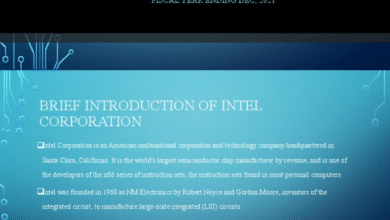Federal Reserve Minutes: Insights on Inflation and Rates
The recent release of the Federal Reserve minutes provides crucial insights into the economic concerns that shape monetary policy in the United States. During their latest meeting, Fed officials grappled with pivotal issues such as interest rates, inflation risks, and the state of the labor market. Notably, the minutes revealed a split among central bankers, with some advocating for a rate cut in light of growing economic pressures, particularly due to tariffs. Policymakers underscored the delicate balance they face in addressing both inflationary threats and potential employment challenges, highlighting the complexity of Fed policy decisions. As economic conditions fluctuate, these minutes serve as a vital barometer for market participants and analysts alike, seeking to understand the path forward for U.S. monetary policy.
The latest documentation from the Federal Reserve highlights the organization’s deliberations on broad economic factors and their implications for the financial landscape. In discussing their strategic approach, the central bank focused on paramount issues like the trajectory of interest rates, potential hurdles associated with inflation, and the dynamics of the workforce. The meeting showcased contrasting viewpoints among officials, reflecting ongoing debates about the impact of tariffs on economic performance. With the labor market showing signs of strain, the Fed’s policy-making decisions are more critical than ever. As varying interpretations of economic data emerge, such insights from the minutes are essential for stakeholders monitoring the evolving fiscal climate.
Understanding the Federal Reserve Minutes: Key Takeaways
The recently released Federal Reserve minutes highlighted the complex dynamics within the central banking system. During the July meeting, Federal Reserve officials exhibited a significant divergence of opinions regarding interest rate policies. While the majority concurred on maintaining the current rate, two Fed governors expressed a clear preference for a rate cut. This decision is crucial, as it illustrates the ongoing balancing act the Fed must perform in its dual mandate, focusing equally on controlling inflation and promoting employment.
The minutes indicated that participants were particularly concerned about rising inflation risks and the overall health of the labor market. Specifically, they pointed to the influence of tariffs on inflation expectations, with some members expressing apprehension about potential inflationary pressures stemming from President Trump’s trade policies. This reflects the Fed’s cautious approach towards adjusting interest rates, emphasizing the need for a thorough analysis of economic indicators before making significant changes to their monetary policy.
Inflation and the Labor Market: Fed’s Dilemma
In the latest meeting summary, Federal Reserve officials highlighted an intricate relationship between inflation risks and the labor market’s stability. Participants noted an upside risk to inflation driven by various factors, including rising tariffs, which could unanchor inflation expectations. On the other hand, the downside risks concerning employment were also increasingly evident, as signs of labor market softness began surfacing. This dual focus on inflation and employment underscores the inherent challenges within the Fed’s policy-making framework.
The divergent opinions among the committee members signal a growing urgency to reassess the Fed’s stance on interest rates. Some officials believe that if inflation persists beyond initial expectations, it may force the Fed to recalibrate its rate strategies, especially in light of recent weak nonfarm payroll reports. The Fed’s ability to navigate this complicated landscape remains pivotal to ensuring economic stability while adhering to its mandates of fostering maximum employment and price stability.
Impact of Tariffs on Economic Policies
The minutes from the July Federal Reserve meeting placed significant emphasis on the implications of tariffs on economic health. Officials raised concerns about the uncertainty associated with tariff impacts, which could amplify inflationary pressures and distort economic forecasts. These discussions are essential as they reflect how fiscal policies can inadvertently influence monetary strategies, particularly when faced with external shocks to the economy.
As the Fed grapples with rising tariffs, officials acknowledged that unpredictable economic conditions impact their policy decisions. They recognized that a careful consideration of both current fiscal policies and their long-term implications is imperative for effectively managing inflation and supporting a robust labor market. Therefore, the interrelation between tariffs and Fed policy decisions will likely play a crucial role in shaping future interest rate strategies.
Navigating Inflation Risks in a Volatile Economy
The Federal Reserve’s approach to interest rates is intricately linked to the evolving inflation landscape. As discussions during the July meeting highlighted, inflation risks are multifaceted and require vigilant monitoring. The Fed’s commitment to achieving price stability is challenged by various external factors, including international trade policies and domestic economic conditions that can contribute to inflationary surges.
Fed officials have expressed that they must stay alert to changes in inflation metrics to determine appropriate responses in their policy decisions. Should inflation rise more swiftly than anticipated, the Fed may consider modifying interest rates more aggressively. Thus, the minutes reflect a prudent approach to managing inflation risks while balancing the imperative to sustain employment levels amidst potential economic fluctuations.
The Dual Mandate: Balancing Employment and Inflation
The Federal Reserve operates under a dual mandate to ensure price stability and promote maximum employment. The latest meeting minutes reveal a palpable tension between these two objectives, especially in light of worsening labor market indicators. As the Fed navigates the economic landscape, it must weigh the risks associated with sustaining low unemployment against the need to control inflation effectively.
Participants in the meeting voiced varying perspectives on whether the current inflationary pressures represented a temporary spike or a more lasting threat. This uncertainty complicates the Fed’s decision-making process, as they must ensure that policies are aligned with both achieving stable prices and maintaining a healthy labor market. The divergent opinions reflect the complexities faced by policymakers when striving to fulfill their dual mandate in challenging economic times.
Fed Policy Decisions Amid Political Pressure
Federal Reserve policy decisions are not only driven by economic indicators but are also influenced by the broader political climate. The recent political pressure exerted by President Trump on the Fed to lower interest rates has added a layer of complexity to the decision-making process. The minutes showcased how Fed officials are cognizant of this political backdrop while working to maintain their independence in pursuing monetary policy that aligns with economic fundamentals.
Despite external pressures, the Fed’s priority remains focused on economic stability. The July meeting reflected a cautious approach, suggesting that rate cuts should only be considered if inflation significantly deviates from targets or if the labor market shows sustained deterioration. Ultimately, Federal Reserve officials must navigate these political dynamics while ensuring that their policy measures are grounded in sound economic reasoning.
Monitoring Economic Growth: The Fed’s Vigilance
The state of economic growth is a primary concern for the Federal Reserve, and recent meeting minutes highlighted persisting uncertainties about the speed and sustainability of growth. After acknowledging tepid economic expansion in the first half of the year, policymakers expressed the need to continuously monitor incoming data to inform future decisions on interest rates. Their observations of a weakening labor market, coupled with reduce consumer spending, signal a potential recalibration of the Fed’s approach to interest rate adjustments.
The Fed’s vigilance on economic growth indicators is critical, as even slight shifts can necessitate changes in policy. The committee members underscored the importance of responding effectively to shifts in the economy to maintain alignment with their dual mandate. Consequently, the Fed’s decision-making process is underpinned by a commitment to adapt their policies based on real-time data to ensure sustained economic stability.
Expectations for Future Fed Policy Directions
Speculation about the Federal Reserve’s future policy directions intensifies as the central bank approaches critical speeches by Chair Jerome Powell. The upcoming keynote address at Jackson Hole is expected to provide clarity on the Fed’s stance regarding interest rates and long-term monetary policy strategies. Given the recent turbulence in economic indicators, market participants will be closely watching for signals that could influence Fed policies in light of evolving inflation and labor market conditions.
Fed officials have signaled that forthcoming decisions will depend heavily on recent economic developments and trends. With the market reacting to shifting expectations, any hints of policy adjustments from Powell could have profound implications for both interest rates and economic growth. Ultimately, the Fed’s communication strategy will play a pivotal role in shaping public and market perceptions, especially amidst such a dynamic economic landscape.
The Role of Inflation Expectations in Monetary Policy
Inflation expectations are critical components of monetary policy, directly influencing the Federal Reserve’s approach to interest rates. Recent discussions in the Federal Reserve minutes underscored the importance of monitoring these expectations, as they can help forecast future inflation trends. When inflation expectations become unanchored, they present a challenge to maintaining price stability, prompting the Fed to consider proactive measures.
Policymakers recognized that managing inflation expectations requires a delicate balance, especially in times of economic uncertainty. While maintaining an appropriate interest rate policy, the Fed must also communicate transparently with the public to mitigate concerns about rising prices. Therefore, understanding the role of inflation expectations will remain an essential focus for the Federal Reserve as it navigates its monetary policy amid fluctuating economic conditions.
Frequently Asked Questions
What are the key points discussed in the latest Federal Reserve minutes regarding interest rates?
The latest Federal Reserve minutes highlight a divergence among central bankers on interest rates, with a majority agreeing to hold rates steady. The discussions raised concerns about upside risks to inflation, underscored by the effects of tariffs, and the potential downside risks to the labor market, indicating a cautious approach to future Fed policy decisions.
How do the Federal Reserve minutes address the impact of tariffs on inflation risks?
The Federal Reserve minutes express concerns about tariffs serving as a significant risk factor for rising inflation. Participants noted the uncertain effects of tariffs, which could lead to inflation expectations becoming unanchored, contributing to the complexity of Fed policy decisions as they relate to managing inflation risks.
What insights do the Federal Reserve minutes provide about the labor market conditions?
The Federal Reserve minutes indicate rising concern over the labor market, with participants noting that downside risks to employment have meaningfully increased due to slowing economic activity. Some Fed governors argued for a rate cut to support the labor market amid these emerging threats, highlighting ongoing challenges as they relate to the dual mandate.
What does the latest Federal Reserve minutes reveal about Fed policy decisions?
The latest Federal Reserve minutes reveal a cautious stance toward Fed policy decisions, with officials recognizing both inflationary pressures and labor market vulnerabilities. Despite calls for a rate cut from some governors, the overall consensus was to maintain the current interest rate to carefully monitor evolving economic conditions.
What does the Federal Reserve say about inflation risks in their meeting minutes?
In their meeting minutes, the Federal Reserve indicates a prevailing concern about inflation risks, particularly the potential for these risks to persist amid changing economic conditions. Participants highlighted the need to balance this with the downside risks to employment as they consider future interest rate policies.
How do the Federal Reserve minutes reflect on past employment data reports?
The minutes reflect unease regarding past employment data, noting that growth in nonfarm payrolls had been weaker than originally reported, raising alarms about the labor market’s stability. This lower-than-expected performance could influence future Fed actions, especially if job market conditions continue to weaken.
What role does inflation play in the decision-making outlined in the Federal Reserve minutes?
Inflation plays a critical role in the decision-making outlined in the Federal Reserve minutes. Officials recognized significant upside risks to inflation, particularly influenced by tariffs, which complicates their assessment of when and how to adjust interest rates. The Fed’s balance between inflation control and labor market support is highlighted as a key factor in their ongoing policy considerations.
| Key Points |
|---|
| The Federal Reserve minutes show a divided opinion among central bankers regarding interest rates. |
| Two governors, Waller and Bowman, voted against holding rates steady, advocating for cuts instead. |
| Participants expressed concern over inflation risks due to tariffs and labor market conditions. |
| Despite concerns, a majority viewed inflation risks as greater than the risk to employment. |
| The fed funds rate has been stable between 4.25% and 4.5% since December, marking a significant consensus. |
| Political pressures, especially from President Trump, are influencing Fed discussions and decisions. |
| Upcoming economic data may impact future Fed policy directions, especially regarding employment. |
Summary
The Federal Reserve minutes indicate a complex and divided perspective within the committee regarding the state of the economy and the appropriate stance on interest rates. While there are significant concerns about inflation, particularly linked to tariffs, the risks related to employment are also prominent. As discussions continue amidst political pressures, the Federal Reserve faces critical decisions that will shape financial policy in the coming months.




